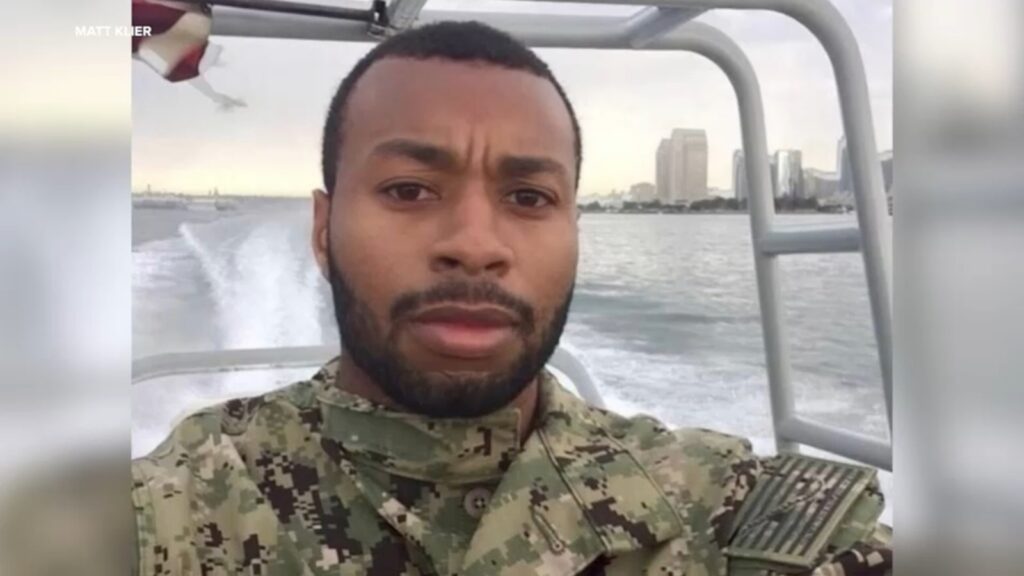On Thursday afternoon, the Hudson River bore witness to a somber tragedy as a sightseeing helicopter crash resulted in the heartbreaking loss of six lives: the pilot, Seankese Johnson, and a family of five from Spain. As investigations unfold, the event has raised serious concerns about the safety of helicopter tours in the area, along with calls for regulatory reforms to prevent future tragedies.
Pilot Seankese Johnson: A Dream Deferred
Seankese Johnson, 36, who moved to New York City this year, had just started his promising career as a commercial helicopter pilot. Describing his new role as “living the dream” on his LinkedIn page, he had recently earned his commercial pilot’s license in just 2023 and was striving to provide unforgettable aerial experiences to tourists flying over the iconic Manhattan skyline.
Tragically, Johnson’s aspirations came to an abrupt end along with the joyous vacation of a Spanish family he was tasked to fly. John and his family had dreams of sightseeing from above, painting a picture of happy memories that sadly turned into a nightmare.
Details of the Crash and the Victims
The helicopter operated by Johnson crashed into the Hudson River, resulting in the immediate loss of all onboard. The victims included Agustin Escobar, the Global CEO of Rail Infrastructure at Siemens Mobility, his wife Merce Camprubi Montal, and their three young children, aged 4, 8, and 10, with the 8-year-old celebrating a birthday that day.
Eyewitness reports indicated that the helicopter appeared to break up in mid-air before descending rapidly into the river. Johnson had a total of 788 flight hours, but specifics regarding his experience with the type of helicopter he was piloting remain under investigation. Friends and family remember him as a dedicated and talented aviator, affirming that he was committed to ensuring safety in his flights.
Reactions from Family, Friends, and Tributes
Tributes have poured in for both Johnson and the Escobar family. Questions about the nature of the flight and what went wrong are at the forefront of discussions among authorities, loved ones, and the public. Johnson’s father expressed his heartbreak over the loss of his son, noting how he had only just begun his new life as a pilot. Furthermore, Johnson’s former Navy comrades remembered him fondly, emphasizing his friendly nature and exemplary skills.
On the other side, the Escobar family was remembered by colleagues and community members in Spain, who were deeply impacted by the loss of a distinguished professional and his family. Their story is one that resonates deeply, impacting numerous lives and magnifying the intense vulnerability felt during tourist activities.
Rising Concerns Regarding Helicopter Tours
The tragic incident has prompted renewed scrutiny of the safety regulations governing helicopter tourism in New York City. Campaigners from the group Stop the Chop have long argued against the continuation of non-essential helicopter flights over the city, citing aging aircraft and the increased potential for accidents. With many helicopters operating beyond their optimal age, safety advocates believe that a thorough reassessment of operational regulations is overdue.
Andrew Rosenthal, chair of Stop the Chop, highlighted alarming statistics, mentioning that nearly 40 lives have been lost in helicopter accidents in New York City since 1977. He expressed his outrage over an insufficient safety framework. “If we had a roller coaster that killed people every two years, we would not keep it operating,” he proclaimed, emphasizing the urgent need for reform.
Official Responses and Future Actions
Mayor Eric Adams has responded to the public outcry, acknowledging the potential need for change in response to the latest crash. While tourism remains a substantial part of New York City’s allure, public safety must become the priority. He has been engaged in discussions about balancing the tourism demands with necessary safety protocols, emphasizing the need for rigorous maintenance of all aircraft in operation.
As investigations proceed, authorities are determined to establish the precise causes of the crash while advocating for measures to prevent similar tragedies in the future. This incident has already become pivotal in discussions involving legislative changes regarding helicopter flight regulations.
Conclusion: Seeking Solutions Moving Forward
The helicopter tragedy over the Hudson River is a stark reminder of the vulnerabilities present within the growing tourism industry. In memory of the six lives lost, families, friends, and the community are advocating for decisive actions that demand accountability in safety regulations for helicopter flights over New York City. As the investigation continues, the hope remains that valuable lessons can be drawn to ensure that such heartbreaking incidents become avoidable in the years to come.
As the final chapter unfolds of a tragic day, the collective question remains: Will future helicopter tours become safer, or will we continue to wait for another warning sign before enforcing lasting changes?

